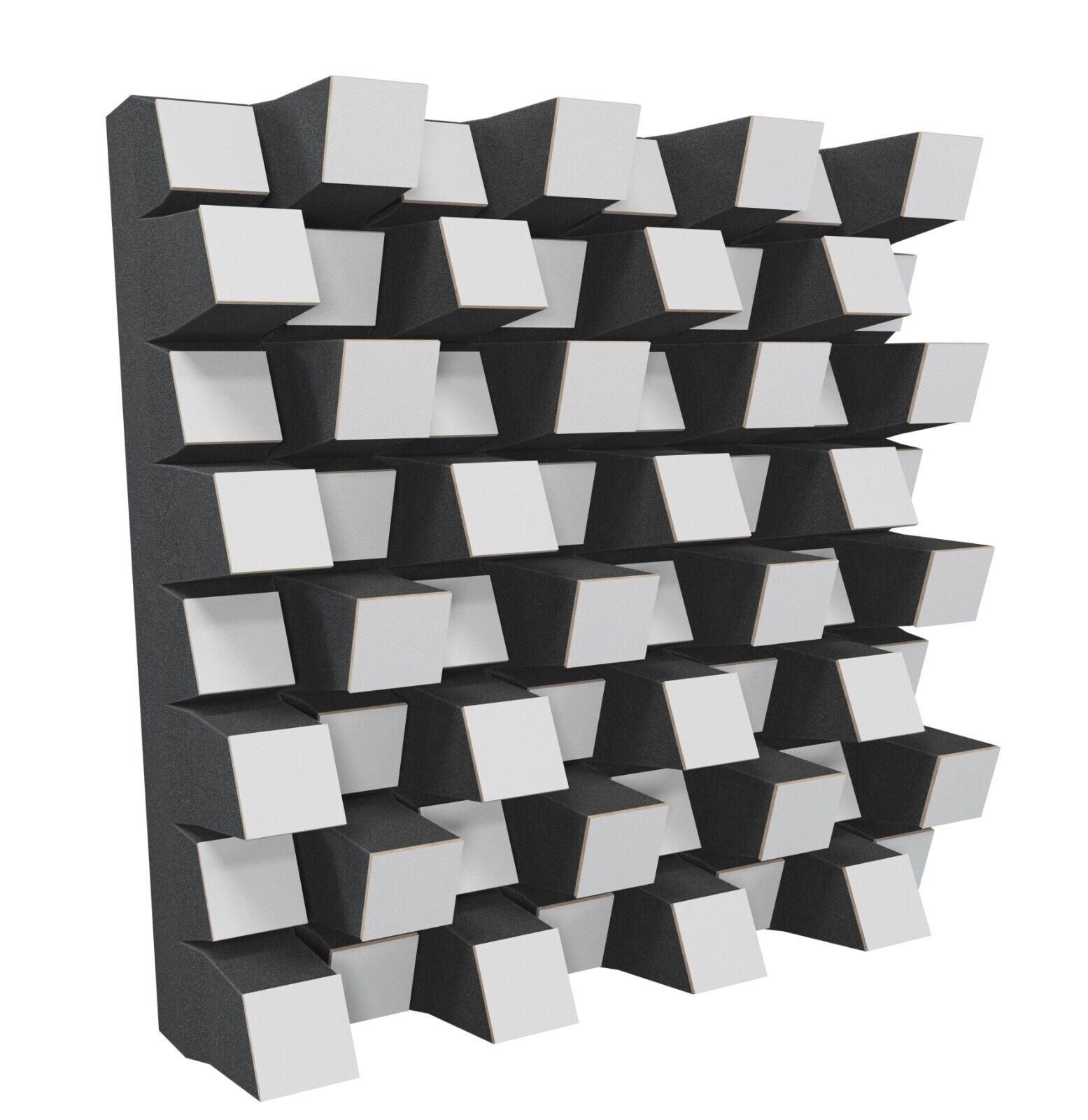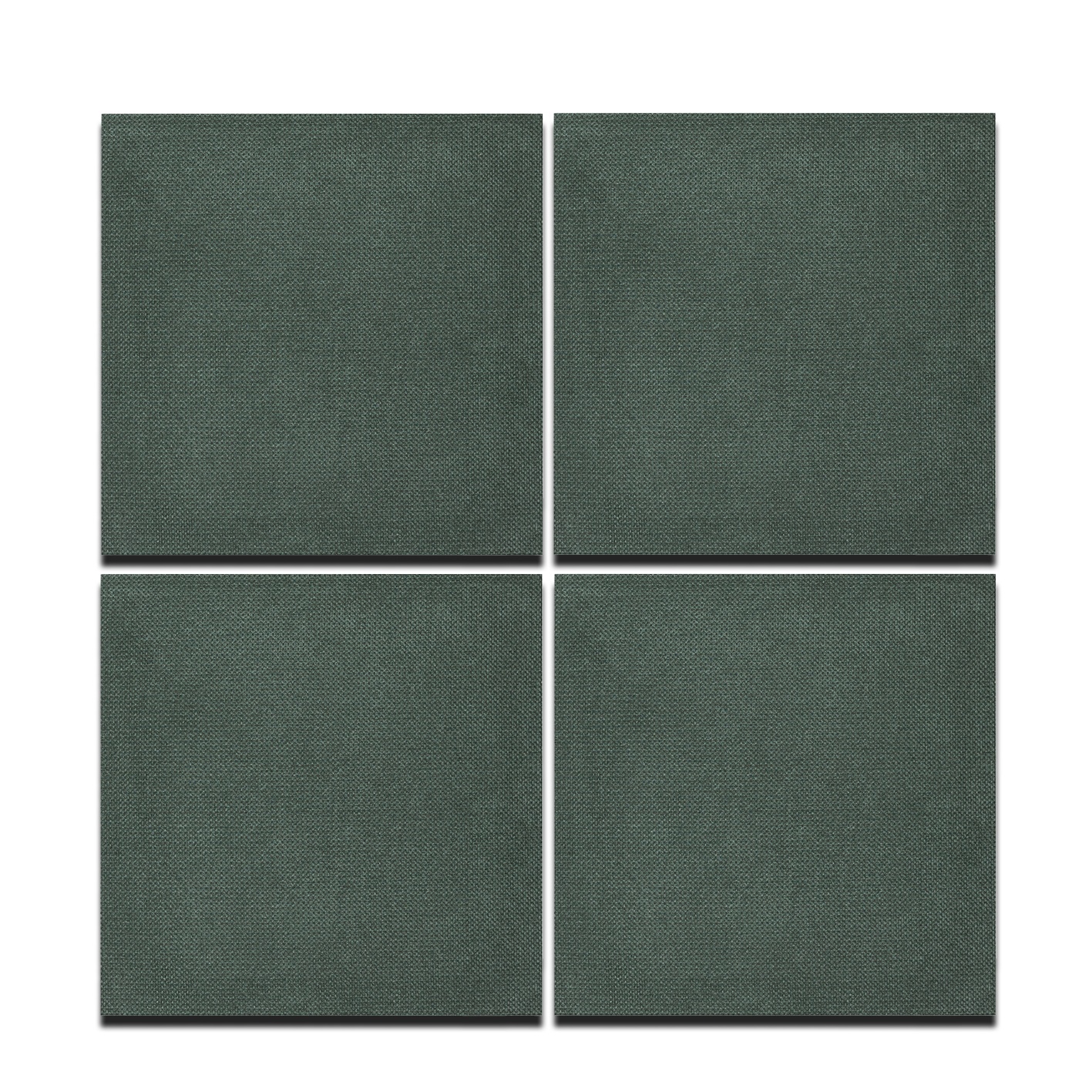The difference between sound absorbers and sound diffusers – create the perfect sound environment
Achieving an optimal sound environment requires a balance between absorbing and diffusing sound. Two important acoustic solutions are sound absorbers and sound diffusers, but their functions differ significantly. By understanding the differences and how they can be combined, you can create a more pleasant and well-balanced acoustic tailored to the needs of the room.
What do sound absorbers do? – Reduce reverberation and echoes
Sound absorbers are designed to capture and reduce sound reflections, which lowers reverberation and echo in a room. By absorbing sound waves, the sound energy is converted into heat, resulting in a more controlled sound environment. This is especially important in settings where disturbing sounds can affect concentration, speech clarity, or the experience of music and film.
Sound absorbers are commonly used in:
Offices and conference rooms
Reduces distracting background noise and improves speech intelligibility.
Restaurants and cafés
Creates a calmer and more pleasant environment by lowering the noise level.
Home theaters and music studios
Improves sound quality by reducing unwanted reverberation.
Homes
Creates a more harmonious sound environment in living rooms, bedrooms, and home offices.
Sound absorbers are made from porous materials such as acoustic foam, mineral wool, or polyester, which effectively reduce sound levels. By placing them on walls, ceilings, or other hard surfaces, you can significantly improve the acoustics of a room.
What do sound diffusers do? – Improve sound distribution
Unlike sound absorbers, which reduce sound, sound diffusers are designed to evenly spread sound throughout a room. They prevent sound focusing and dead zones by reflecting and scattering sound waves in multiple directions. This creates a more natural acoustic and makes the sound feel balanced and vibrant.
Sound diffusers are commonly used in:
Recording studios and concert halls
Evenly distributes sound for a more natural sound image.
Home theaters
Enhances the surround effect by creating a more realistic sound experience.
Music rooms and rehearsal spaces
Reduces uneven reflections and provides a richer acoustic.
Sound diffusers are often made of wood or other hard materials with specific geometric shapes that break up sound waves and scatter them over a larger area. This allows the room to retain a natural resonance without feeling dampened or lifeless.
Which solution is best for your room?
The choice between sound absorbers and sound diffusers depends on the acoustic needs of the room. If you are experiencing a lot of echo or noise, sound absorbers are the best option for creating a more controlled sound environment. If the soundscape instead feels flat or unbalanced, sound diffusers can help create a more dynamic and vibrant acoustic.
In many cases, a combination of both is the most effective solution. By using sound absorbers to dampen unwanted reflections and sound diffusers to evenly distribute the remaining sound, you can create an optimized sound environment—whether it’s in a home, office, or professional studio.








